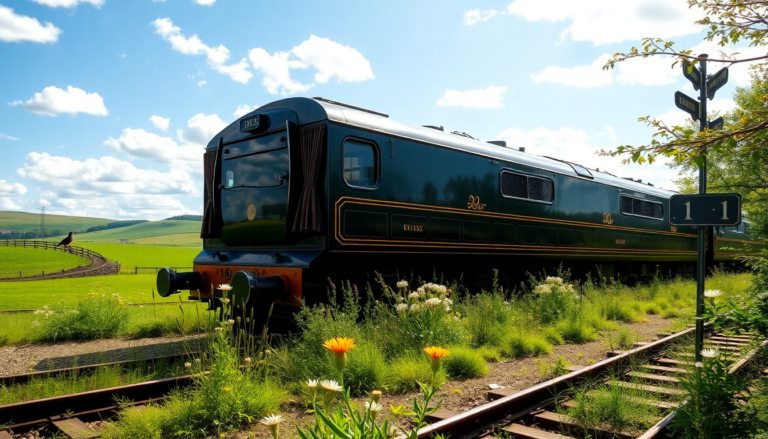Argomenti trattati
For nearly two centuries, the British royal train has stood as a symbol of elegance and tradition, whisking monarchs and their families across the United Kingdom. But as we approach 2027, this illustrious chapter in royal history is set to close, leaving behind a legacy that resonates through time. Each journey on this remarkable train has been more than just a trip; it’s been a narrative woven with threads of history, culture, and the very essence of British identity. How does such a vessel encapsulate the spirit of a nation?
The Royal Train: A Journey Through Time
The story of the British royal train began in 1842 when Queen Victoria became its first passenger, embarking on a brisk 30-minute journey from Slough to Paddington, London. Her diary entry described the experience as “delightful and swift,” setting the stage for the opulent journeys that would follow. This train was not merely a mode of transport; it transformed into a canvas for royal expression. Queen Victoria even commissioned lavish carriages adorned with blue silk and 23-carat gold details, now lovingly preserved at the National Railway Museum in York. Can you imagine the splendor of those interiors?
As time marched on, the royal train underwent various transformations, mirroring the changing tastes and evolving nature of royal travel. The sumptuous interiors of the Victorian era gradually gave way to a more practical, understated design. Yet, the train’s status as the preferred choice for both short jaunts and long-haul journeys endured, particularly during the reign of Queen Elizabeth II, who often favored the train for its nocturnal convenience—no more early morning flights!
Despite murmurs of retirement echoing through history, the announcement of the royal train’s decommissioning by 2027 has sparked significant conversations about its role in today’s society. James Chalmers, the Royal Treasurer, emphasized the train’s cherished place in the nation’s life, loved by all who have worked aboard it. However, the modern monarchy must also weigh the financial implications of maintaining such a grand relic, especially in an era where accountability in the use of public funds is paramount. What does it mean for a monarchy to adapt in these times?
The Future of Royal Travel
As King Charles III steps into his vision of modernizing the monarchy, the decision to retire the royal train mirrors broader changes afoot. The financial burden of upkeep has simply become too heavy, prompting a shift towards more sustainable and cost-effective forms of travel. This isn’t the first time the future of the royal train has been debated; discussions about its fate have been ongoing since 1997. Yet, it enjoyed a resurgence during the Jubilee celebrations of Queen Elizabeth II, reminding us of its enduring significance.
One of the last notable journeys took place in December 2020 when the Duke and Duchess of Cambridge traveled over 2,000 kilometers by train to express gratitude to key workers during the COVID-19 pandemic. This journey encapsulated the royal train’s legacy—not just a vehicle of luxury, but a means of connecting with the people and acknowledging their contributions. Isn’t it fascinating how a train can bridge gaps between royalty and everyday citizens?
By March 2027, the royal train will retire as part of King Charles’s plan to modernize the monarchy and ensure the prudent use of public resources. This marks the end of an era, but it also opens the door to new possibilities for royal travel that align with contemporary values of sustainability and efficiency. What innovative modes of travel might we see in the future?
Preserving a Legacy
As the British royal train prepares to take its final bow, it leaves behind a rich tapestry of stories and memories that have shaped the monarchy’s relationship with the nation. Each journey was more than mere travel; it was a celebration of heritage, a connection to the past, and a reflection of the royal family’s commitment to the people. The elegant carriages and the gentle sway of the train symbolize a bygone era—one that will be fondly remembered in the annals of history.
As we bid farewell to this magnificent institution, we’re reminded that every ending brings forth new beginnings. The royal legacy will continue to evolve, adapting to changing times while still honoring the rich traditions that have come before. The retirement of the royal train doesn’t erase its significance; rather, it invites us to reflect on the stories it carried and the connections it forged. What memories will you take from this remarkable journey of tradition and innovation?

